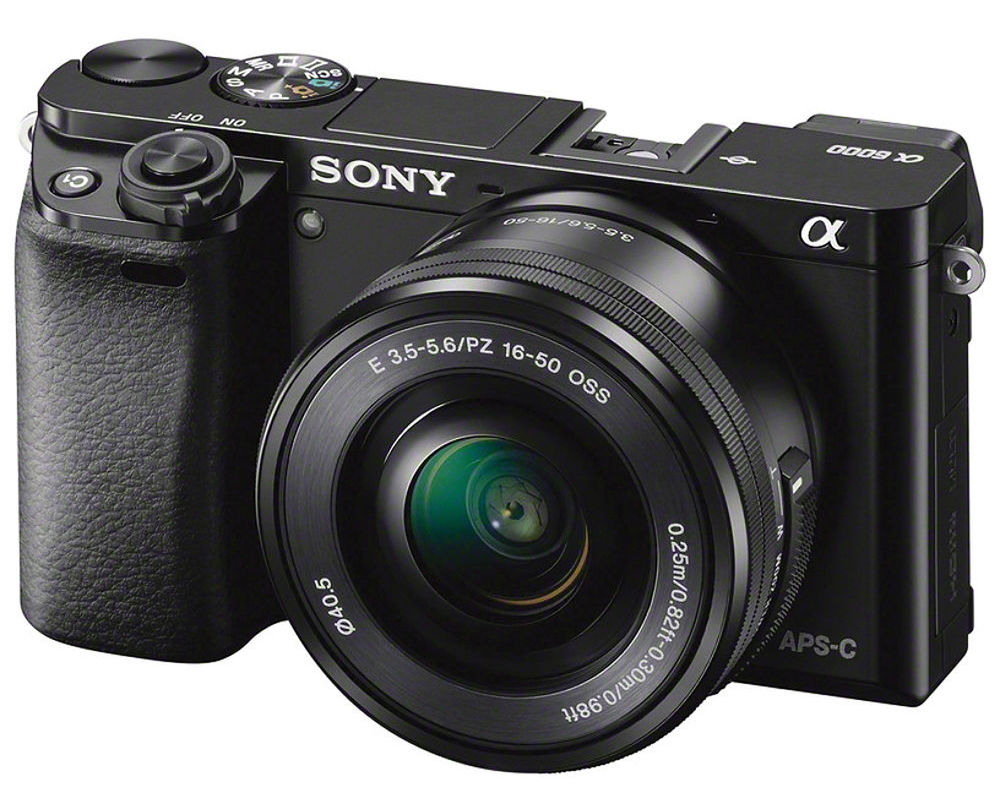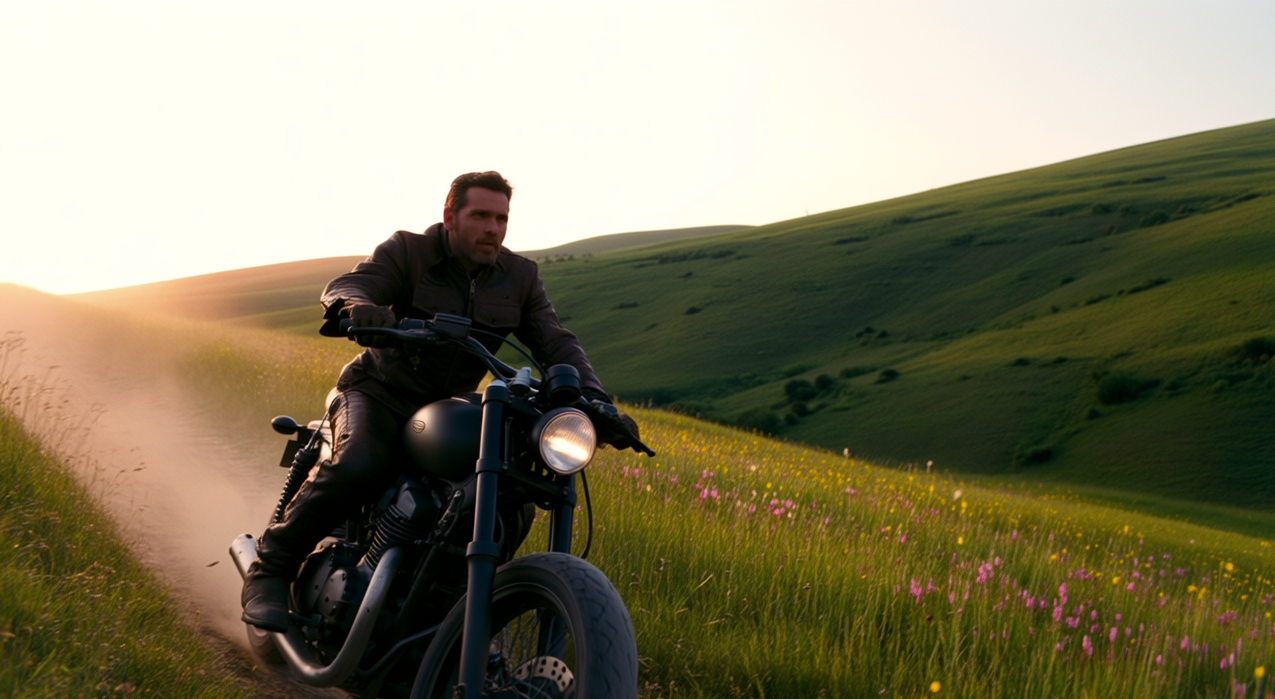Tom's Guide Verdict
Sony’s a6000 is a midrange mirrorless camera that offers an excellent feature set, fast continuous performance and top-notch image quality.
Pros
- +
Fast continuous shooting and autofocus
- +
Compact body
- +
Multiple custom control options
- +
Above-average image quality
- +
Excellent low-light performance
Cons
- -
Vast array of camera settings may be overwhelming
- -
Noise reduction can be excessive
- -
Clunky adjustment of focus point selection
Why you can trust Tom's Guide
It's been a number of years since Sony released its a6000 mirrorless camera—the company now has three successors—but as the original has come down in price to around $500, it's become a great camera for amateurs who want to step up into the world of interchangeable lens cameras.
With its 24-megapixel sensor, rapid autofocus system and high-speed continuous shooting, the a6000 can generally keep pace with fast-moving subjects. If photographing kids at play in the yard or the local soccer game is your thing, the a6000 may be a perfect fit. More important, the a6000 is a solid general-use camera that delivers on many fronts, making it one of the best mirrorless cameras you can buy, especially for beginners. And, despite its age, it's one of the best cameras, period.
If you're looking for a newer mirrorless camera, be sure to check out our Sony a6100 review. That model is roughly $100 more than the a6000, but has features such as a better autofocus system and 4K video.
To help you choose, we've got a straight comparison on the Sony a6000 vs. a6100 and have also compiled a guide to the best Sony mirrorless cameras, which compares the a5100, a6000, a6100, a6300, a6400, a6500, and a6600.
Sony a6000: Design
Measuring 4.8 x 2.9 x 1.9 inches, the a6000 body is nicely compact and about half the size of an average mainstream DSLR body. Constructed of composite materials, the body is light at 12.1 ounces but feels solidly built. The a6000's grip is comfortable to hold, even for those with bigger hands. Unlike some other mirrorless models that lack an electronic viewfinder (EVF) or on-board flash (or both), the a6000 is equipped with both.
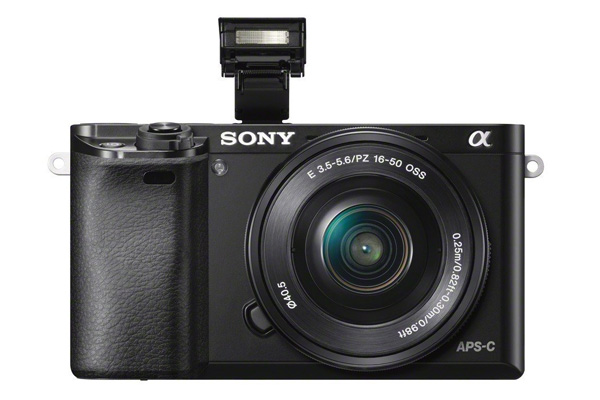
At 800 x 600, the a6000's OLED (organic light-emitting diode) EVF is somewhat low in resolution, but still more than adequate. Camera settings are clearly visible, and the EVF doesn't black out during high-speed continuous shooting, so you can always see your subject. Sensors near the eyepiece trigger the camera to switch the view from the rear LCD to the EVF when you raise the camera to your eye. But the a6000's mechanism is easily triggered when anything gets near it. And a slight hesitation in switching between the two viewing screens is frustrating.
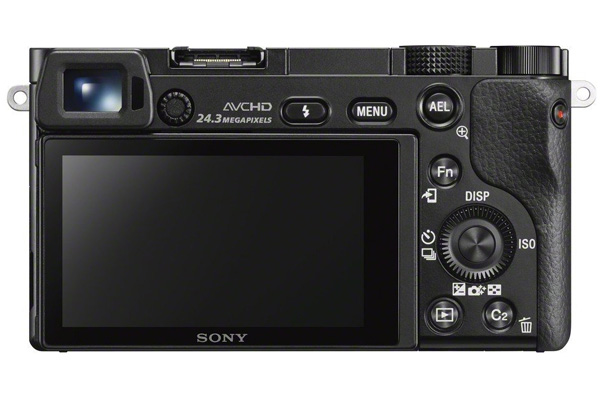
The 3-inch, 640 x 480 LCD on the camera's rear panel tilts back as far as 90 degrees and down by approximately 45 degrees. Under mild light, the LCD is bright and clear, but it's difficult to see in strong sun, even with the monitor brightness cranked up or the Sunny Weather mode engaged. In bright light, it's better to use the EVF.
The a6000's small pop-up flash has a reach of about 20 feet (shooting at ISO 100). It's good for flash fill to illuminate backlit subjects but can sometimes overpower a shot at close distances. (You can use the flash-exposure compensation setting to adjust the output.) The flash tilts back up to 90 degrees to bounce off a low, light-colored ceiling in order to soften the light as it falls onto the subject. You can also mount one of Sony's three external flash units on the a6000's multi-interface hot shoe.
Sony a6000: Controls
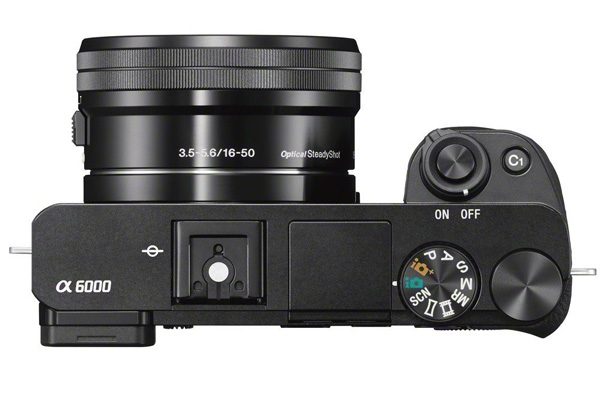
The a6000's many controls and custom options could be overwhelming at first, but they allow enthusiasts to set the camera up just right for their preferences. Featuring two dials, one wheel and nine buttons, the camera's compact body keeps almost everything within easy reach. In addition to two dedicated user-assignable buttons, other controls are also customizable. For example, an Fn button calls up an on-screen menu with your choice of up to 12 functions for easy access.
Some settings, however, such as turning image stabilization on and off, require digging deeper into the a6000's menu system. The internal menus are fairly easy to navigate but are dense with options. The biggest drawback is the tiny, red video-record button on the right side of the camera. It's hard to reach and requires so much force to press that the camera shakes when starting or stopping video recording.
MORE: A Digital Camera Glossary
The Sony a6000 scores very well in our test of how easy it is to access key settings. The chart below represents the number of steps or button presses required to access a setting in the camera's default mode. However, the a6000's ability to customize controls can reduce the number of steps, which we indicate in parentheses.
| Setting | Steps/button presses to access | Function |
| Shutter | 0 | Length of exposure |
| Aperture | 0 | Amount of light let in |
| ISO | 1 | Light sensitivity |
| Focus Mode | 1 | Point or points used for focus |
| Light metering | 1 | Part of image with optimized exposure |
| White balance | 2 (1) | Overall color cast of image |
| Exposure compensation | 1 | Set auto exposure to be darker or lighter |
| Wi-Fi sharing | 4 | Send images to smartphone, activate remote viewfinder |
| Video recording | 1 | Switch from photo to video and back |
| Play | 1 | View images or videos you've shot |
| Delete image | 2 | Erase photo from memory card |
| Photo capture resolution | 2 (1) | Amount of megapixels |
| Photo capture quality | 2 (1) | Amount of JPEG compression/detail, or RAW |
| Video capture resolution | 3 | Lines of resolution and frame rate |
| Video capture quality | 3 | Amount of compression/detail |
| Drive | 1 | Single photo, burst, timer, etc. |
Sony a6000: Image quality
The a6000 is built around a 24-megapixel APS-C-size CMOS sensor (like those in most DSLRs) and Sony's Bionz X processor, a combination that usually delivered top-notch image quality. We tested the a6000 with a trio of lenses: the kit-option E PZ 16-50mm f/3.5-5.6 OSS Power Zoom ($350, if bought separately), the Sony Sonnar T* FE 35mm f/2.8 ZA full-frame prime lens ($800) and the Sigma 60mm f/2.8 DN/A ($350). For continuity with other camera reviews, we shot mostly with the 35mm lens, which has a 52mm full-frame-equivalent field of view. Images were captured simultaneously as JPEG and uncompressed RAW files, allowing us to compare any differences between the two. We used different light-metering modes depending on the scene.
Daylight results
The a6000 shines in good light. With the camera set to Standard (the default) or Neutral in the Creative Style menu, colors are relatively accurate and pleasing, though not as saturated as those from other mirrorless cameras, particularly the Olympus O-MD series models. If you prefer more color intensity, you can set the a6000's Creative Style to Vivid.
MORE: DSLR vs. Mirrorless Cameras: Which is better for you?
Digital cameras traditionally have difficulty accurately reproducing reds, but the a6000 did an excellent job in a photo of a bright-red canoe shot with the kit zoom lens (and manual white balance). Our choice of center-weighted metering (the default is evaluative) exposed for the canoe, leaving the trees in the background a bit dark, but we think that's a nice offset for the red.
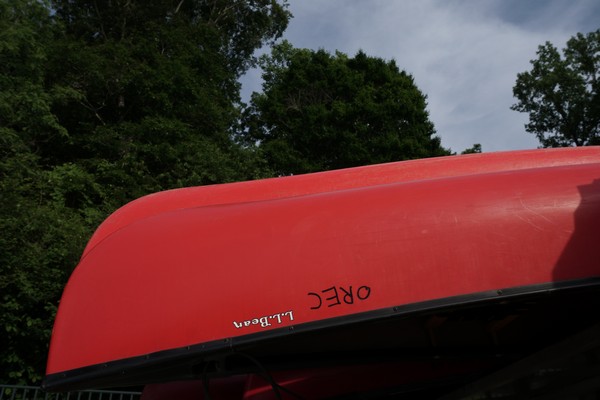
The camera's light metering was generally accurate. For instance, it evenly exposed a scene by a lake with extreme bright and dark areas (shot in aperture-priority mode with center-weighted light metering). Details remain visible in both shadows and highlights.
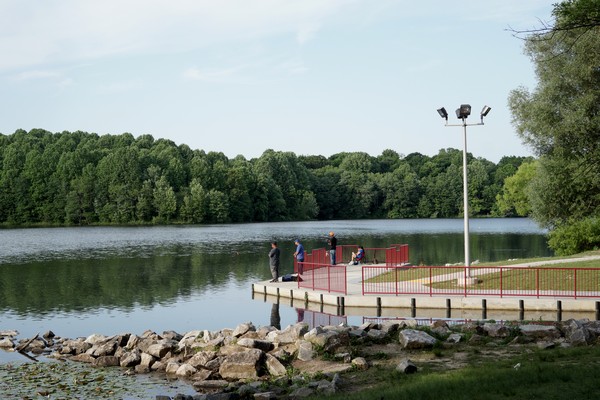
JPEGs straight from the camera were above average in terms of color and sharpness — though not quite as good as competitors such as the Olympus OM-D M10 and Samsung NX30. We found that at lower ISOs (up to 1,600), editing the RAW files in Photoshop delivered only a modest amount of improvement over the JPEGs.
Good details were captured of a weathered boat photographed against a wooden structure with the 35mm lens. Even the foreground is nicely focused in this shot with an f/9 aperture, which provides a good depth of field. The neutral gray/white of the wood is accurately reproduced, without any tint, when using the Sunny white balance preset.

We were impressed with the lack of purple fringing, a chromatic aberration that sometimes appears as a purple smear along the edges of high contrast subjects. A photo of a barn on a bright day, shot on manual exposure with the 35mm lens, shows a clean transition between the barn's roof and the sky.
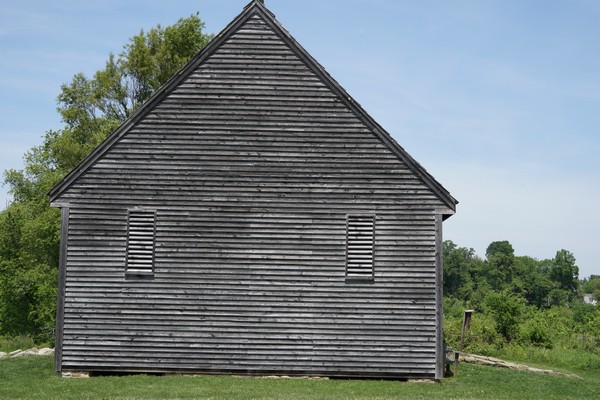
Sony a6000: Low-light performance
The a6000 performs well under low light up to a moderately high ISO, (light sensitivity) setting of 1600. An ISO 1250 shot at night of storefronts with some bright lights juxtaposed against very dark areas shows little noise (graininess) even in the darkest portions.

Beyond 1600, the internal noise reduction for JPEGs can be a little heavy- handed, softening details. That's a shame, because based on the RAW-image files, the a6000 is the best mirrorless camera we've seen for low-light performance.
We measure ISO noise using the Imatest test pattern and analysis software. The a6000 scored notably better than three competitors: the Samsung NX30 (which was second best) and the Olympus OM-D E-M1 and M10, which were nearly identical to each other. So if you are shooting at higher ISO's you should get a significant improvement by editing the RAW files and applying lighter noise reduction than the a6000's internal processing would.
The a6000's lead over competitors widens as the ISO goes up, especially at the high end of ISO 12,800 and 25,600. We found that you can comfortably go to ISO 12,800 — as in this photo of a nighttime dance party — if you display the image relatively small, such as for a 5 x 7 inch print or a full-size (4MP) Facebook image post. (We shot the photo with Sony's 35mm lens at 1/30 second, hence a smidgen of motion blur.)
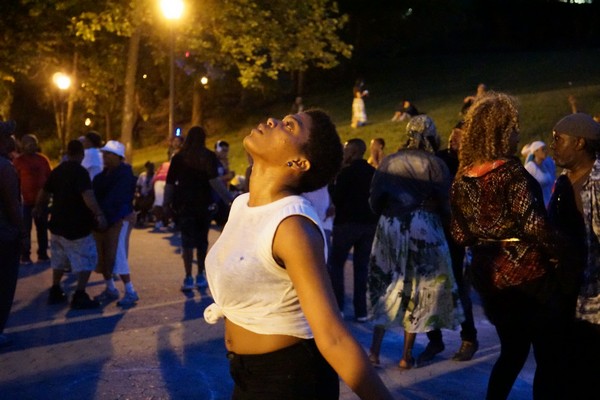
MORE: How Many Megapixels Do You Really Need?
The photo of a Kachina doll was shot using the 35mm lens at the default flash setting, which evenly and accurately exposed the small figure. The "flash" white balance preset rendered the very pale yellow walls a little grey since the tiny blast of light mainly hit the figure.
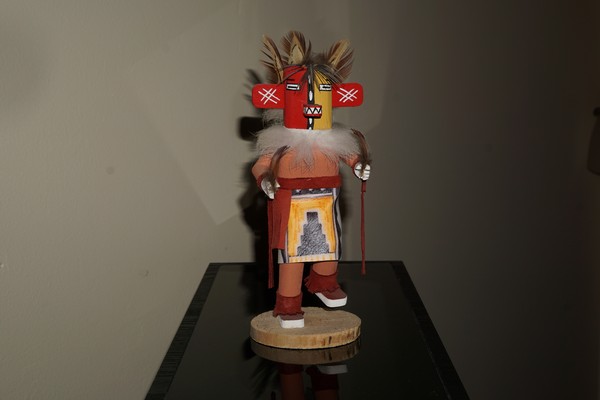
Sony a6000: Video performance
The a6000's video implementation is outstanding, with full manual control (aperture, shutter speed and ISO) possible before and during filming. However, the only focus choices are manual or continuous AF. While the latter works well, it would be nice to have a single AF choice to avoid the risk of the lens moving in and out of focus — although we rarely saw that.
The a6000 also provides control over the AF drive speed (slow, normal, fast) and the AF tracking duration (normal, fast), which determines how quickly the camera decides to refocus. If you're shooting a fast-moving subject, such as a child running, set both to fast. Static or slower-moving subjects, such as someone walking, look smoother with the Normal or Slow drive speed and normal AF tracking duration.
The a6000 can record video in the AVCHD format at 1980 x 1080 and up to 60fps progressive or interlaced and at the filmlike 24 fps progressive (24p). MPEG 4 capture is possible at 1440 x 1080 or 640 x 480 at 30fps.
Bright-light video results
Exposures in Program mode were generally accurate, and focus followed through well. We didn’t notice any rolling shutter, or "jellocam," a wobbling effect in video that DSLRs and mirrorless cameras sometimes suffer from.
The a6000's autofocus kept up with children playing in a fountain. Since the scene was evenly lit by the sun, exposure was accurate throughout the scene.
Low-light video results
When challenged with extremely low light, the a6000's autofocus was able to keep up with moving subjects such as people dancing, in part by using face-tracking autofocus. Even a dancer in the shadows is easy to make out. We shot this piece at 24p, as the shutter speed required for 60p would be too fast to capture enough light. White balance was a little warm on the auto setting, but that corresponds to the amber lighting of the scene. Audio has a warm tone that is pleasing to the ear. If you are shooting more than casual video, you may want to buy Sony's $160 external microphone, the ECM-XYST1M, that fits into the multi-interface shoe at the top of the camera. (The a6000 doesn't have an audio-in jack for attaching mics from other manufacturers.)
Sony a6000: Autofocus and speed
The a6000 features both the slow contrast-detection autofocus of earlier mirrorless cameras (also found in point-and-shoot and phone cameras) but augmented with fast phase-detection sensors like those used in DSLRs. The a6000 has an impressive 179 phase-detection points (up from 99 in the NEX-6) that cover about 92 percent of the image sensor, resulting in above-average autofocus performance.
The a6000 sprints in continuous shooting, capturing up to 11 frames per second at its highest speed setting and applying autofocus to each photo. The Olympus E-M5 — a camera we really like for its speed and image quality — can reach 9 fps but sets focus only at the first frame, so it's not as useful for tracking a moving subject.
We were able to capture about 53 frames in highest-resolution JPEG format and about 20 when shooting simultaneous JPEG and RAW files before the camera had to slow down. But we were able to continue shooting, though for shorter bursts.
Sony a6000: Wireless capabilities
The a6000's built-in Wi-Fi sets up a hotspot for communicating with a smartphone. Pairing the camera and phone was easy using an iPhone 4S, and is even easier with NFC-enabled Android phones, as it requires merely tapping the two devices together.
You can transfer images to the phone for uploading or to use the smartphone as a remote trigger after installing the free Sony Play Memories app (iOS and Android). The only camera setting that app provides is exposure compensation. To get more control of the camera, you need to download the free Smart Remote Control app.
Sony also offers specialty Play Memories apps for functions including time-lapse and long-exposure night-sky images. Several apps are free, although the more interesting ones range in price from about $5-$10.
Sony a6000: Battery life
With a CIPA rating of 310 shots (using the viewfinder) and 360 shots (using the LCD monitor), the a6000's battery life looks decent on paper. Ratings based on the CIPA standard are generally accurate for basic shooting but don't take into account features such as continuous autofocus, image stabilization or Wi-Fi.
As a real-world example, we drained the battery to 46 percent one day after shooting about 220 images (captured as JPEG and RAW), using both the rear LCD and the viewfinder. We did not use Wi-Fi or shoot video, or use continuous AF or flash for any shots.
The a6000 includes a USB cable and AC adapter to charge the battery in-camera. An optional wall unit, such as the $60 BC-VW1, allows you to charge one battery while shooting with another. (An extra unit of the NP-FW50 battery costs $80.)
Sony a6000: Kit lens
An $800 bundle option includes the Sony E-Mount 16-50mm f/3.5-5.6 OSS Power Zoom lens. Its range (24-75mm in full-frame equivalent) is typical for kit zoom lenses and perfect for all-around shooting. The lens is very compact at 2.6 (diameter) x 1.2 inches, when retracted, and it weighs only 4.1 ounces. Sony's Optical SteadyShot feature works slightly better than average image stabilization, making it easier to shoot at slower shutter speeds. The power zoom lever triggers a motor that provides a smooth transition throughout the lens' focal range. You can also use the lens's zoom ring, but we found this to be not as smooth.
The focus in the corners of photos looked a bit soft when shooting with the 16-50mm kit lens, but otherwise, images were sharp. With a maximum aperture of f/3.5 (wide) to 5.6 (telephoto), the lens is good for brighter shooting conditions but doesn't fare as well in low light.
Lenses
Sony has built up its E-Mount lens line over the years to include a nice variety of primes and zooms ranging in price from just under $300 all the way up to $1,200. For a bit more cash, a6000 users can select new FE (full-frame) lenses designed for Sony's a7, a7R and a7S cameras.
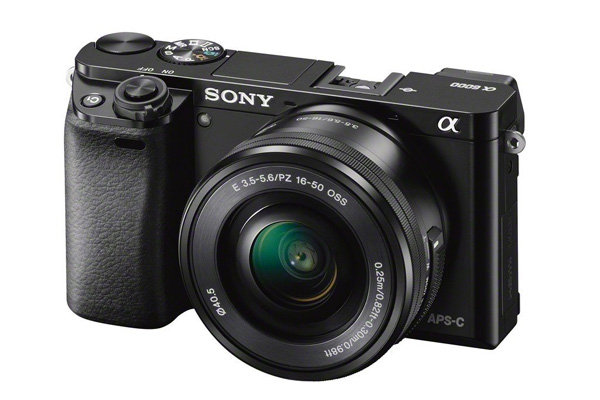
To judge the a6000's full capabilities, we tested primarily with the Sonnar T* FE 35mm f/2.8 ZA full-frame prime lens ($800), which delivered good results with little distortion and good corner-to-corner sharpness. Mounted on the a6000, it delivers a 52mm field of view, which is a good everyday focal length that roughly matches how close subjects appear to the naked eye.
Companies such as Sigma and Zeiss also offer E-Mount lenses. We particularly like the $350 Sigma 60mm f/2.8 DN/A lens (equivalent to a 90mm telephoto) for clarity and sharpness that are especially impressive at this price. Sony also sells adapters for attaching the A-Mount lenses from its DSLRs.
Sony a6000: Verdict
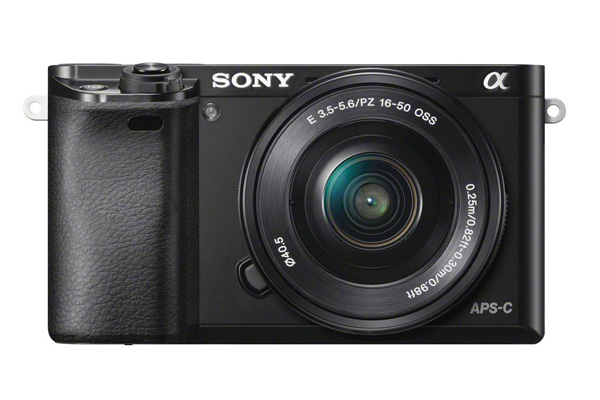
As the mirrorless, interchangeable-lens camera market continues to grow, it’s more difficult to make a decision about which camera to purchase. Since the a6000 came out, Sony has released three newer models, the a6300, a6400, and the a6500. Both the a6300 and a6500 are also very strong (albeit more expensive) models, but for those looking for an entry-level mirrorless camera, the a6000 remains one of the best.
Sony a6000 key specs
| Model name | Sony a6000/ILCE-6000/B |
| Megapixels | 24.3 |
| Type | Mirrorless |
| Price | $650 body only; $800 with 16-50mm kit lens |
| Shots per sec | Up to 11 fps continuous shooting with AF and AE |
| Sensor type | APS-C |
| Kit lens offered | 16-50mm, f3.5-5.6 |
| AF points and types | 179 phase-detect; 25 contrast-detect |
| Shutter speed range | 1/4000-30 sec., photo; 1/4000-1/4 sec., video |
| ISO range | 100-25,600, photo; 100-12,800, video |
| Main video resolutions/frame rates | 1980 X 1080 at up to 60fps progressive or interlaced, 24 p (AVCHD format); 1440 x 1080, 640 x 480 at 30fps (MPEG 4 format) |
| Video file formats | AVCHD, MPEG 4 |
| Built-in flash | Yes |
| Hot shoe | Yes |
| Card type | Single slot: SD/SDHC/SDXC or Memory Stick PRO Duo/PRO-HG Duo/PRO-HG HX Duo |
| Ports: HDMI, mini-USB, DC IN | Row 15 - Cell 1 |
| Shots per charge (CIPA) | 310 (using OLED viewfinder); 360 (using LCD screen) |
| Wireless capabilities | Wi-Fi, NFC |
| Image stabilization | Kit lens, select other lenses |
| Dimensions and weight | 4.75 x 2.88 x 1.87 inches; 12.1 ounces (body only) |
Theano Nikitas is a freelance journalist and photographer. She's been writing about photography for more than 20 years, contributing countless reviews of cameras, lenses, accessories and software packages to Tom's Guide. Her work has also appeared in dozens of other magazines and websites, including CNET, DPreview, PopPhoto, Professional Photographer and Shutterbug.
